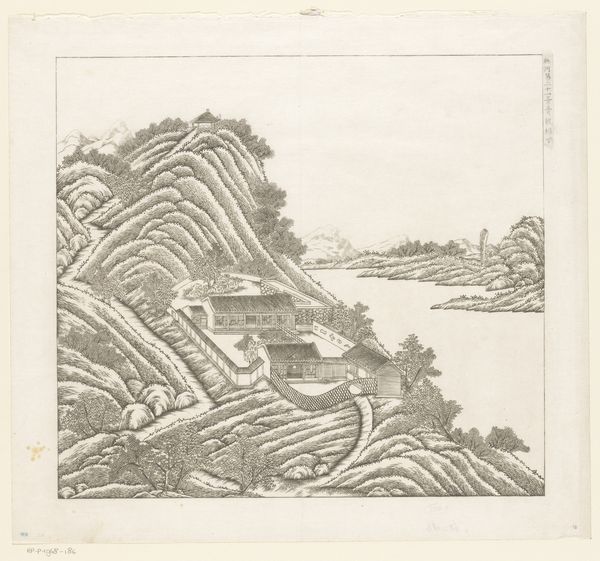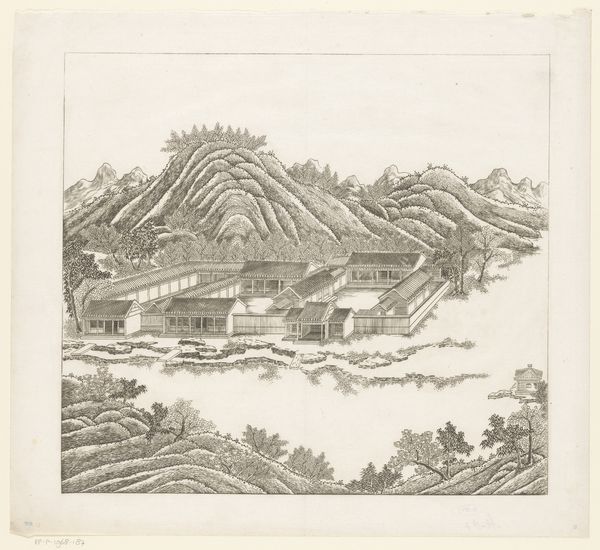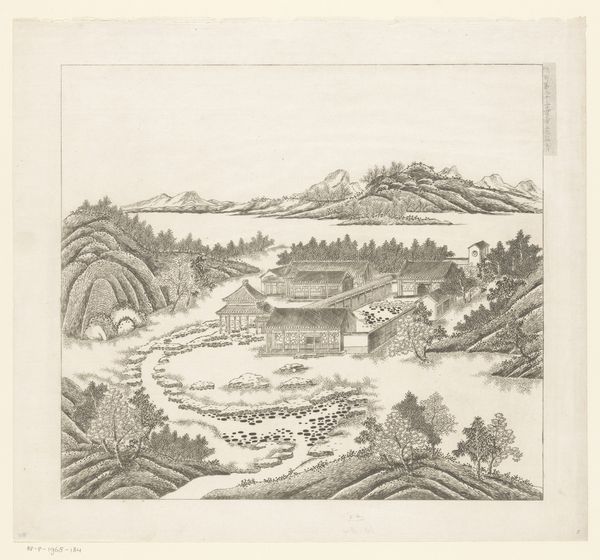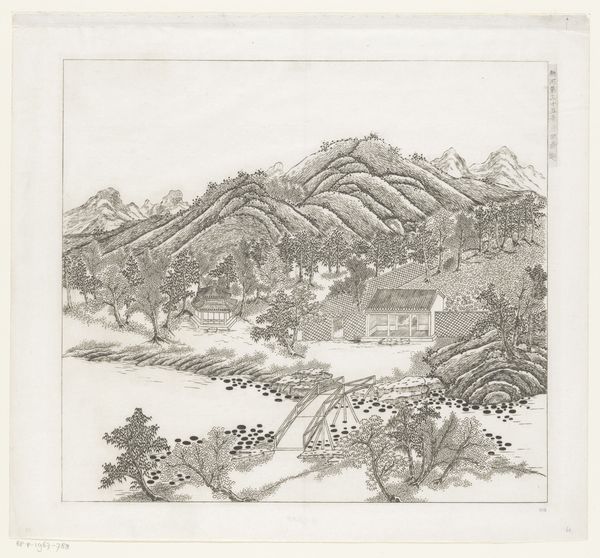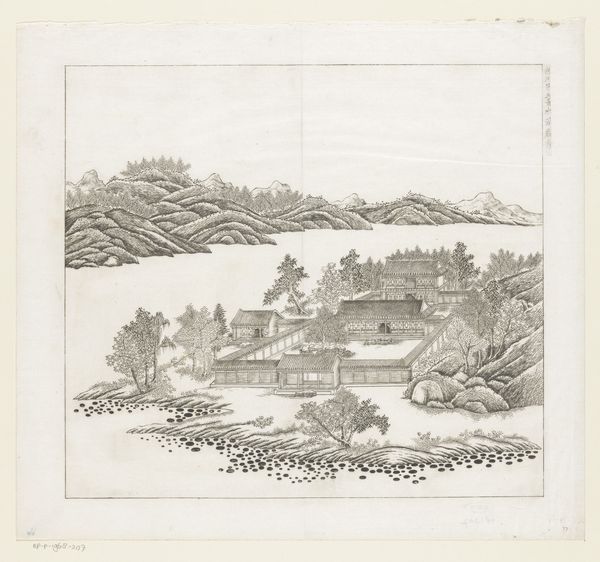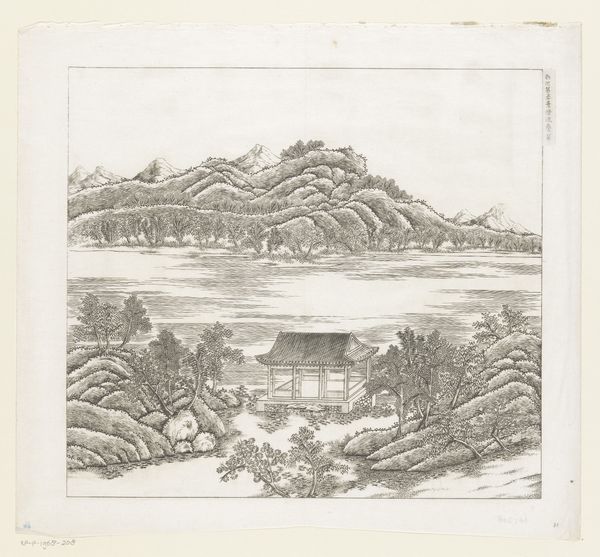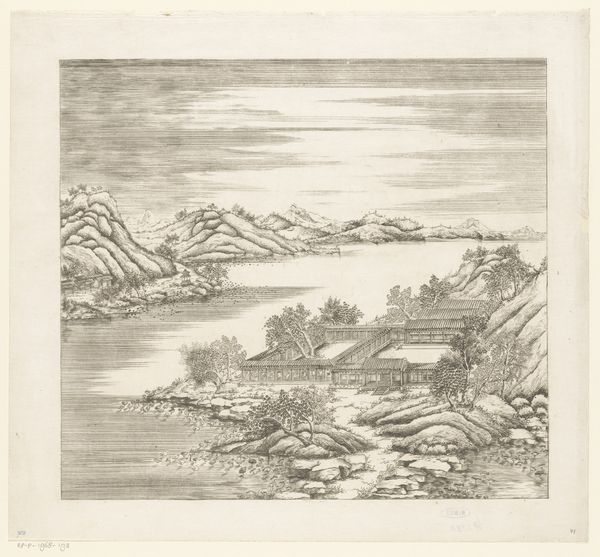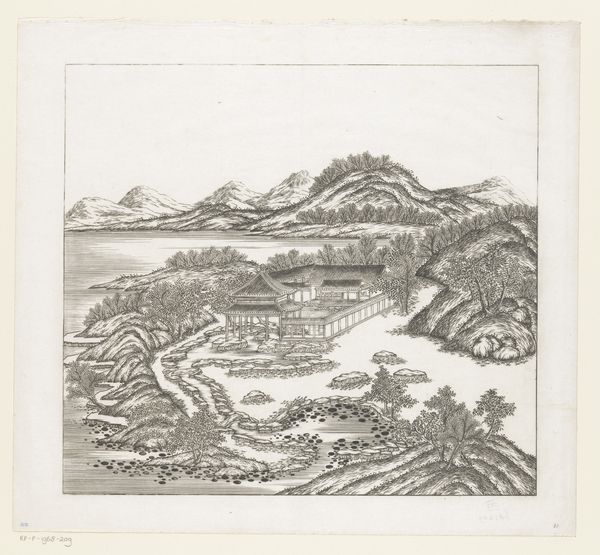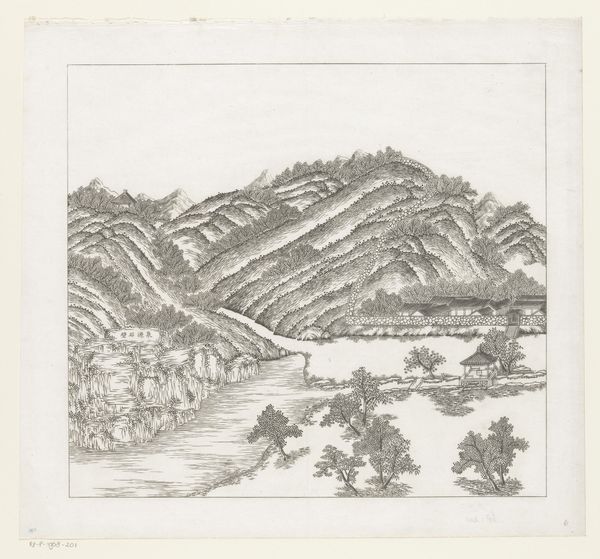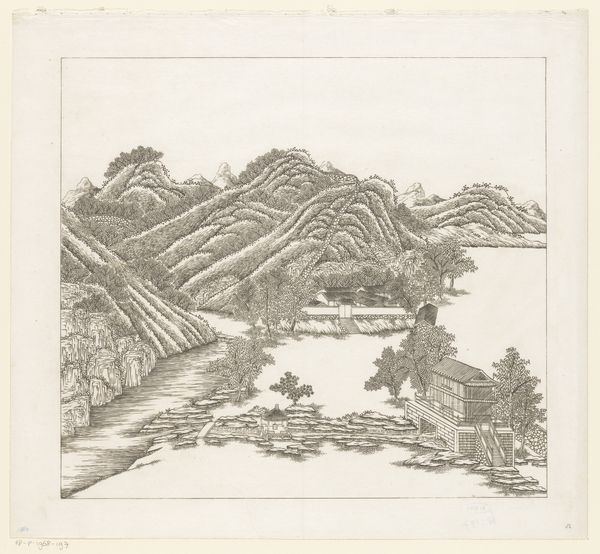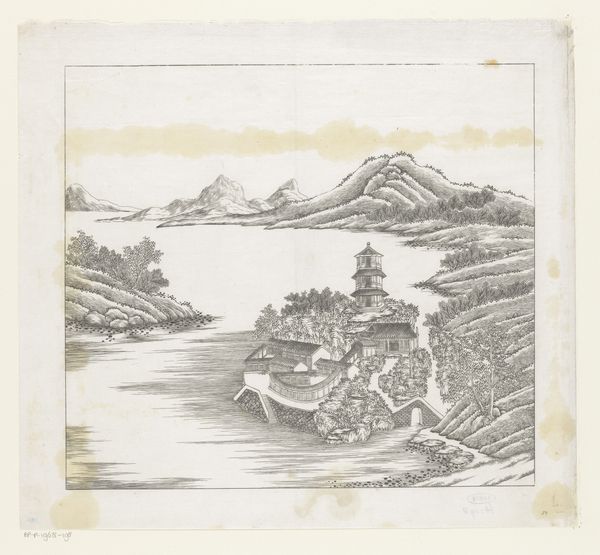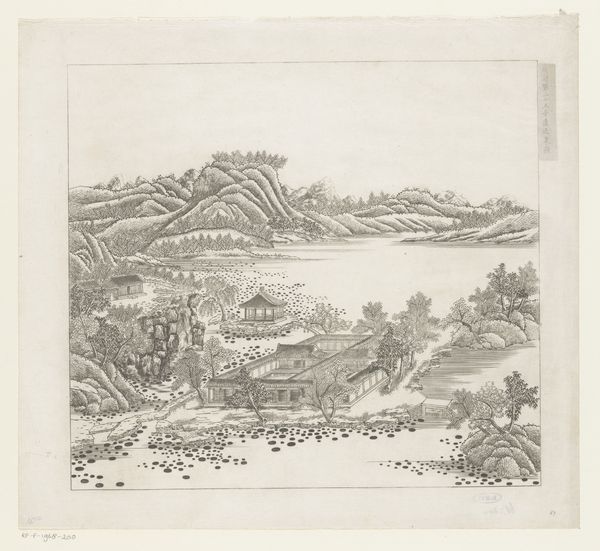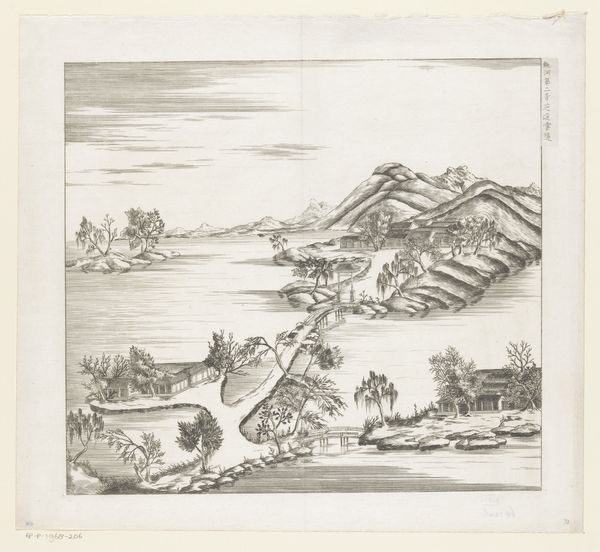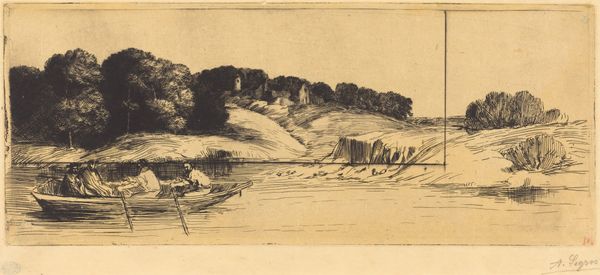
Gezicht op een deel van het keizerlijk zomerpaleis in Chengde (Jehol) te China 1712 - 1714
0:00
0:00
print, etching, engraving
# print
#
etching
#
asian-art
#
landscape
#
cityscape
#
engraving
Dimensions: height 325 mm, width 356 mm
Copyright: Rijks Museum: Open Domain
Curator: Before us, we have "Gezicht op een deel van het keizerlijk zomerpaleis in Chengde (Jehol) te China," or "View of Part of the Imperial Summer Palace in Chengde (Jehol) in China" by Matteo Ripa. This engraving, dating back to between 1712 and 1714, presents us with a landscape rich in cultural and historical context. Editor: It’s striking, the way the delicate linework almost vibrates with a quiet energy. It feels…contemplative, somehow. There's a serene stillness despite the intricate detail. Curator: Ripa's perspective is fascinating. As an Italian missionary working for the Qing court, he straddled vastly different cultural landscapes. This piece acts as a document of cross-cultural exchange, revealing 18th-century European engagement with China. Editor: I see that mirrored in the symbolism, that convergence of cultures and the palace nestled among the hills is not just an image of power, but perhaps speaks to negotiation, both literal and symbolic, within that power. The careful details in architecture as a place where worlds meet. It is like the mountain protects both ways of thinking. Curator: Precisely. Consider the act of translation inherent in image-making here. Ripa, as a Western artist, interprets and represents a Chinese imperial space. We must ask, what biases or cultural assumptions shape this rendering? Whose gaze are we seeing through? Editor: I keep coming back to the bridge—not just as an architectural element, but a visual metaphor. A point of connection between foreground and background, between water and land, perhaps between empires too? And is there an insinuation in that connection? How that link works or how its broken. Curator: Indeed. And what does it mean that this image, designed for European audiences, circulated back in China as well? How was Ripa's interpretation received, and how did it impact the ongoing negotiations between the Qing dynasty and the West? This engraving is a reminder of how images themselves become sites of political and cultural contestation. Editor: It shifts my understanding, recognizing it less as a passive depiction and more as an active participant in the push and pull of intercultural dialogue. I feel as though I am experiencing that play with symbols and cultural interpretation between places and times. Curator: That's a crucial perspective, positioning it beyond just visual appeal. It is an object that demands we interrogate its layered meanings. Editor: Ultimately it really is like two distinct voices find some kind of harmony within the frame, wouldn't you agree?
Comments
No comments
Be the first to comment and join the conversation on the ultimate creative platform.
